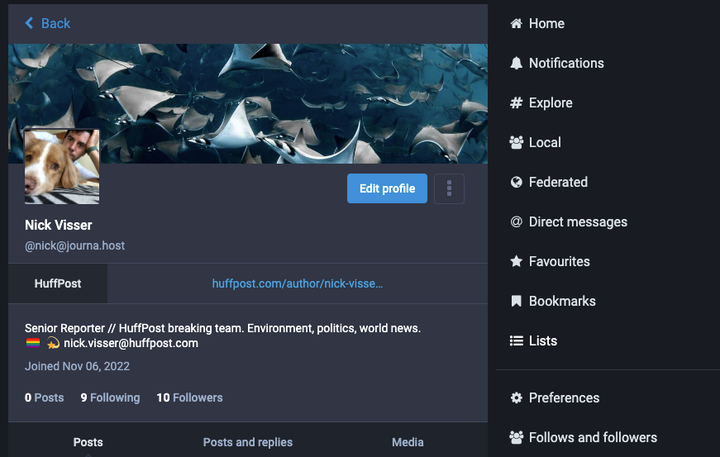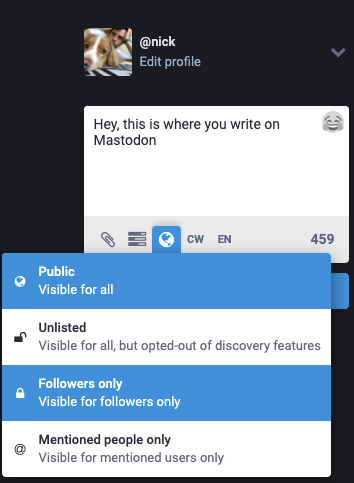Hundreds of thousands of people have flocked to Twitter alternatives after Elon Musk’s takeover of the social media giant became real last week, opening up a can of worms surrounding verification, online venom and privacy. One of the major players so far is a 6-year-old site called Mastodon that’s been booming among journalists, academics and communities that have left Twitter en masse.
So what’s Mastodon all about, why is it different than Twitter, and who is it for?
What is Mastodon and why is it different?
Mastodon was created in 2016 by Eugen Rochko, a 29-year-old German coder, as a decentralized replacement for Twitter. The social network has timelines where you can see messages posted by other users you follow. But notably, its servers aren’t based in one place or owned by one company.
Rather, Mastodon has a huge number of servers, or “instances,” that anyone can set up. The software is open-source, and Rochko is adamant it will never be for sale.
The moderators of each server — which can be based around professions, hobbies, geography, anything really — are able to control the group’s guidelines, filtering out spam, trolls or certain types of content. If a user isn’t happy with the server, they’re easily able to switch to another one that better suits what they want.
It’s ad-free, and there are no algorithms that place certain messages higher or lower in the timelines based on popularity or some tech magic. All posts are chronological, from earliest to latest.
How do you sign up?
Joining Mastodon is definitely more complicated than the relatively simple Twitter sign-up process. If you’re interested, you have to find a server that seems interesting to you, or that you’ll jive with on some level. Some just let you join, while others have moderators that review sign-ups manually.
There are communities for specific countries, languages, professions, passions and sexualities. There are also huge general communities for people interested in technology, climate activism or just generally looking for a place to post.
Your username is a bit more complex, too. Users pick a username that’s affiliated with the specific instance that becomes your home base. I signed up for a journalist-specific server called journa.host with my first name, so I’m @nick@journa.host.
Importantly, you can communicate with and follow anyone on any server ― it doesn’t matter if they’re not part of your chosen instance. You just need to know their handle.
Right now, Mastodon says there are about 3,600 servers up and running, a 25% increase from recent weeks. More are being added all the time, or you can start your own and keep it as small or let it grow as big as you like. (Running your own server does cost a small fee, which many instances crowdsource).
How do you use it?
Anyone familiar with Twitter will recognize a lot of Mastodon’s features with different, albeit sillier names. A post is called a “toot,” a retweet is called a “boost,” and you can favorite via the star icon.
Mentions and hashtags work similarly, and you can add photos, videos or other attachments to your toots. Users are also able to edit their posts and send targeted messages to specific groups of people, sending them to just your followers rather than your whole instance, for example.

You can write messages that your followers can see in their main feeds. But there are also other channels: The Local channel shows messages from anyone in your server. The Federated channel is a broader channel that shows all public posts the server you’re on knows about. Most of those come from people that other users on your server follow, and it’s meant to be a way to discover “potentially interesting content.”

Who’s on there?
The site has exploded by hundreds of thousands of users in recent days, and Rochko said Sunday there were more than a million active monthly tooters.
Kathy Griffin is on there after she was suspended for impersonating Musk on Twitter. New York Times columnist Paul Krugman said Sunday he made an account on the platform as a “precaution against the possible Muskocalypse.”
The user base has exploded by about 113%, causing some growing pains and reports that servers have acted slow. Some users have had trouble uploading photos or video content, but Rochko said he’s been working to optimize Mastodon and fix some bugs.
Mastodon has stressed that even if some servers seem popular, users can join any one they like and get access to the same network.
What’s going to happen?
It’s anyone’s guess. Twitter users have flocked to Mastodon so far, praising its similarities to the social media stalwart without a lot of the negatives and Muskian ownership quandaries. But other startups are bound to pop up and try and steal some of Twitter’s lucrative online real estate (or advertisers).
Tech writer Kara Swisher said Sunday night that she has seen a “lot of cool stuff coming” down the pipeline to fill the void, but didn’t point to anything specific.
For now, the newly minted Mastodon evangelists say the platform has a lot of what Twitter got right without a lot of what it’s become: Easier ways to filter out hate speech and trolls and an early-days-of-the-internet kind of camaraderie that’s welcoming and fun.
Mastodon’s Rochko said he’s been working around the clock to help the network expand, although he added the manic growth has already “extracted a heavy toll.”
“I don’t think Mastodon or the fediverse has ever received this much attention before,” he wrote this weekend, mentioning the term for a group of interconnected but decentralized servers. “It’s a great opportunity for people to finally see that social media can be done differently, that it can be a protocol not under control of any single company.”
